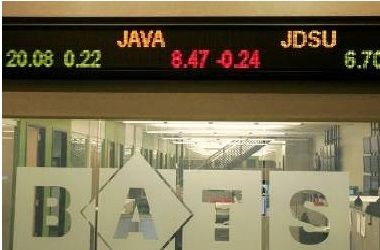BATS Global Markets will launch a price improvement auction mechanism at its EDGX options exchange in November. The Bats Auction Mechanism will enable retail clients to send orders directly to market makers to compete with other liquidity providers for improved pricing on their options trades.
The development makes EDGX the ninth of 14 US registered options exchanges to add a price improvement mechanism.
EDGX was launched by BATS in November 2015 to address growth in pro rata allocation. The execution method, which accounts for 70% of the market, sees the exchange assign a certain portion of incoming orders to market makers, which compete for execution of client activities.
BATS’ primary options exchange, BZX, employs the price-time model with maker-taker pricing that sees orders executed in the order they are received. BZX dominates activity in that execution method with more than 10% market share across the industry, equating to around a third of all price-time orders.
Exchange officials put that growth down to superior technology and operational efficiencies that translate into better pricing incentives for options clients (see story).
The exchange is hoping the addition of a price improvement mechanism at its pro rata allocation exchange will help it to grow market share, which still stands below 1% of all US options activity, according to data from the Options Clearing Corporation.
Bryan Harkins, head of US markets at BATS, said BAM is a natural evolution for the exchange’s options business beyond its success with the price-time priority options method employed by BZX.
“We plan to aggressively expand our product suite to deepen liquidity and improve the execution experience for market participants in the coming months,” said Harkins in a statement.
In addition, BATS will introduce a new Priority Quote Allocation feature, offering incentives for a broader range of participants to maintain two-sided quotes, helping to keep tighter bid-ask spreads in continuous market trading.
Price savings stemming from price improvement auctions can be significant. The BOX Options Exchange said investor savings from orders submitted to its price improvement programme total over US$750m since launch in 2013, while average daily savings from the mechanism topped US$800,000 earlier this year.
But some participants are concerned about the role of price improvement auctions in hampering growth in the US options market. Activity has been flat since a decade of double digit growth came to an abrupt halt in 2011. Hopes for a 2016 turnaround have been hit by a 19% fall in year-on-year activity for July, leaving the market up only 2% year-to-date, OCC data show.
A report from Tabb Group said price improvement auctions account for around 11% of the single stock options trading and could be driving bid-offer spreads wider, potentially contributing to a market-maker exodus that has left just 15-20 active firms, compared with more than 100 a decade ago.
Bid/offer spreads in the US options markets have widened over the last three years from 0.2% to 0.3%, according to data and analytics firm Hanweck Associates. Many believe, however, the shift is simply a function of subdued volatility and regulatory pressures that have forced dealers to axe proprietary activities and reduce their market-making commitments (see story).
BATS listed its shares on its own exchange earlier this year through a US$253m IPO.
